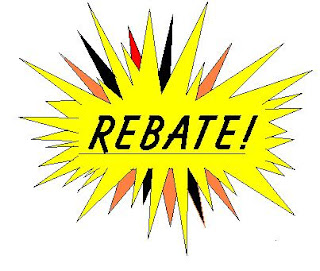The following is a guest post by John D. Brunt, a partner with Blaney McMurtry LLP. John recently moved his practice to join the Real Estate Group at Blaney McMurtry LLP. He has a broad based commercial law practice with a significant portion devoted to real estate and development law.
For a purchaser who intends to purchase a new condominium unit and rent it out for residential use, there are important HST benefits that should be examined, notwithstanding that the purchaser would not qualify for the traditional New Housing Rebate as that purchaser (or his immediate relative) would not take personal occupancy of the unit.
As we enter into our third decade of dealing with the federal Goods and Services Tax, most recently amended in Ontario by harmonization with the Retail Sales Tax to become the Harmonized Sales Tax, many aspects of the GST/HST continue to be the subject of some confusion.
When the GST was implemented, some were concerned about the impact of increasing the cost of new residential housing by the (then) 7% GST. In order to address this, a new housing rebate system was implemented for new housing purchasers in the case where the purchaser (or his or her immediate family member) personally occupies the residential unit as his or her principal residence. This restricted the new housing rebate to new residential units being acquired as a principal residence, but did not address the impact of the GST on new residential rental property, effectively increasing the cost to purchasers of new residential housing renting out the unit to others by the added GST.
It was not until 2001 that this particular consequence was addressed by way of amendments to the Excise Tax Act providing for a New Residential Rental Property rebate (“NRRP Rebate”). The NRRP Rebate provided for the same refund of GST as the new housing rebate, making the treatment of new residential rental property similar to new residential property used as a principal residence. However, the way in which the NRRP Rebate is obtained, the qualifications required for a landlord to obtain the NRRP Rebate and the timing for receipt of refund are all significantly different. In addition, due to the varying structures of ownership of residential rental property such as ground leases and co-ops, the NRRP Rebate is full of technical requirements that need to be examined in each specific case to determine whether or not the NRRP Rebate is applicable.
The NRRP Rebate is generally available in six specific circumstances as follows:
(i) on the purchase of a newly constructed or substantially renovated residential complex where the purchaser leases the complex or units in the complex
(ii) where a builder has paid or accounted for GST/HST on the self supply of a residential complex that is leased
(iii) where a builder has paid or accounted for GST/HST on the self supply of a residential complex and made an exempt sale of the building and an exempt long-term lease of the land under a single written agreement
(iv) where a co-operative housing corporation has paid GST/HST on the purchase of a newly constructed or substantially renovated residential complex from a builder and leases units in the complex
(v) where a co-operative housing corporation has paid or accounted for GST/HST on the supply of a residential complex or an addition to a multiple unit residential complex and it leases units in the complex for long term residential use
(vi) where a person has paid or accounted for GST/HST on the self supply of land that is leased.
This approach is largely market driven from when GST was first introduced in 1991 and there was no NRRP Rebate. The NRRP Rebate introduced 10 years later is not able to be treated by builders in the same manner and, as a result, is not something for which a builder can provide a credit to purchaser on closing. The purchaser must apply directly post closing for the NRRP Rebate (or the builder in the case where the self supply provisions apply) which creates a cash flow issue that has to be borne by the purchaser (or builder in the case of self supply). Combined federal and provincial NRRP Rebates can be in excess of $24,000 so it is clearly worth pursuing.
Once the eligibility of a particular transaction for the NRRP Rebate has been determined, the party entitled to the NRRP rebate must file an application for the NRRP rebate within two years of the transaction giving rise to same. Thus, for those who have within the past 2 years completed an acquisition of a new residential rental property, all is not yet lost! The NRRP Rebate may still be available, and we encourage you to consult with your lawyer to determine whether the transaction is eligible.
The reality of the $450,000 threshold elimination of the federal portion of the NRRP Rebate is that, at least in Toronto, it is most applicable to new condominium units and freehold townhomes. Given these types of residential units make up the greatest portion of the rental units in the City, these limits are probably reasonable for the NRRP Rebate; however, the thresholds have not been revisited or indexed since they were introduced in 1991 and it may be, particularly in Toronto, that the intended benefits of the NRRP Rebate have been significantly eroded over that time. The same holds true for the new housing rebate.
Finally, having applied for and obtained your NRRP Rebate you should be aware that certain ongoing conditions must be met in order for you avoid being required to repay an amount equal to the NRRP rebate plus interest. Where a purchaser who has obtained the NRRP rebate, sells the property within one year to anyone other than a purchaser that will be moving into the unit for his or her (or an immediate family member’s) own use as a primary place of residence, the NRRP Rebate must be repaid. The resale of a property that was the subject of the NRRP Rebate to a subsequent purchaser for rental use will require the NRRP Rebate to be repaid unless the property is held for at least one year.
The NRRP Rebate is a valuable resource for any person purchasing new or substantially renovated rental residential property and can and should be taken into account when determining investment decision.










